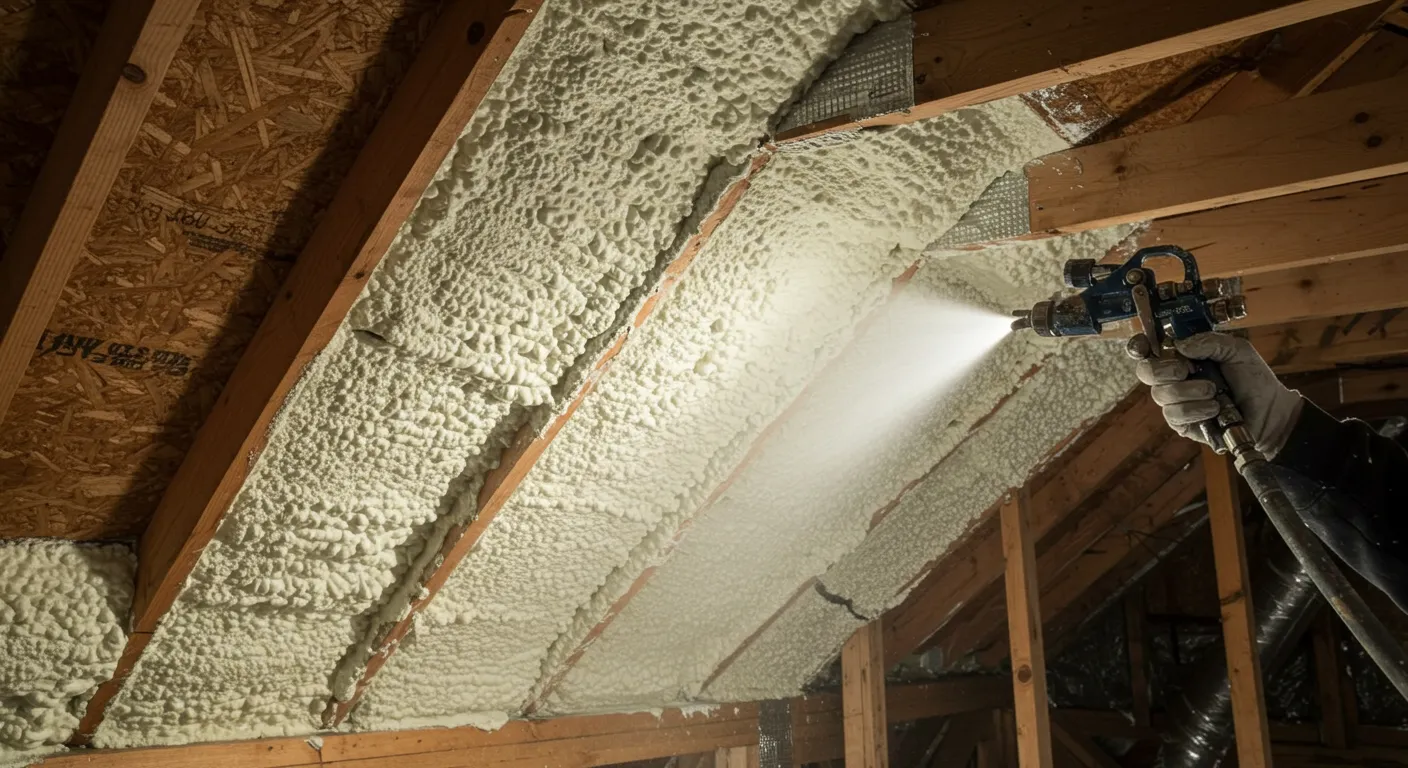
Spray foam insulation is a widely used method for improving home energy efficiency, reducing noise pollution, and enhancing indoor air quality. However, many homeowners have concerns about whether they can sleep in their house immediately after application. The presence of volatile organic compounds (VOCs), the curing process, and air quality concerns all play a role in determining when it is safe to re-enter.
This comprehensive guide explores the safety aspects of spray foam insulation, including the chemicals involved, potential health risks, the required waiting period, and best practices for ensuring safe indoor air quality. By understanding these factors, homeowners can make informed decisions to protect their health and well-being while maximizing the benefits of spray foam insulation.
Spray foam insulation is a chemical-based insulation material that expands upon application, forming a continuous barrier against air and moisture infiltration. It is used in walls, attics, crawl spaces, and other areas to improve thermal performance and prevent energy loss.
There are two primary types of spray foam insulation:
Spray foam insulation consists of two main chemical components:
Additional chemical additives may include flame retardants, stabilizers, and catalysts to enhance performance and durability.
When spray foam insulation is applied, it emits volatile organic compounds (VOCs) as it cures. Off-gassing refers to the release of these compounds into the air, which can pose potential health risks if inhaled in high concentrations.
Several factors affect the duration and intensity of off-gassing:
Exposure to freshly applied spray foam insulation may lead to:
Extended exposure to uncured spray foam insulation may contribute to:
Most spray foam manufacturers recommend waiting 24 to 72 hours before re-entering a home after installation. This time frame allows the material to cure and off-gas sufficiently, ensuring that indoor air quality reaches safe levels.
Before deciding to sleep in your home after spray foam insulation, ensure:
If the off-gassing period extends beyond expectations, homeowners may need to consider temporary accommodations:
Children and pets have more sensitive respiratory systems and lower tolerances for airborne chemicals. It is advised to keep them out of the home for at least 72 hours following spray foam application.
For expert spray foam insulation services in Vancouver, WA, contact Supreme Spray Foam of Vancouver today. Get professional guidance and high-quality installation to ensure a safe and efficient home improvement experience.
Spray foam insulation offers numerous benefits, including improved energy efficiency, noise reduction, and moisture control. However, homeowners must allow adequate time for curing and off-gassing before re-entering the home. Proper ventilation, temperature control, and air purification can help expedite the process, ensuring a safe and healthy indoor environment.
Spray foam typically cures within 24 to 72 hours, though environmental factors can influence this duration.
Yes, improving ventilation, maintaining an optimal temperature, and using air purifiers can accelerate the process.
Once fully cured, spray foam insulation is generally considered safe. However, individuals with chemical sensitivities may still experience mild irritation.
Continue ventilating the area and consider using air purifiers. If the odor persists beyond a few more days, consult an insulation professional.
Once cured, it should not trigger allergies in most individuals. However, those with severe sensitivities may need to test exposure before prolonged stays.
It is not recommended. The installation process generates high levels of VOCs and chemical fumes, making it safer to vacate until curing is complete.